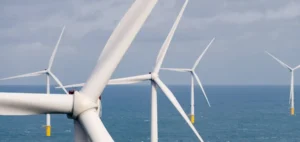Wind power generation in the USA has more than doubled in a decade, reaching around 75,000 turbines capable of powering 40 million homes.
However, with this rapid growth comes an urgent need for qualified technicians to maintain this infrastructure.
Wind turbine maintenance instructor Terrill Stowe trains students in Tucumcari, New Mexico, where one of the country’s few operational wind turbines serves as a hands-on training center.
Maintaining wind turbines is crucial to ensuring their smooth operation and durability.
Technicians not only need solid technical skills, but also the ability to work at height, often in difficult weather conditions.
The Stowe training program, which accommodates between 10 and 20 students per semester, combines theoretical and practical courses, with practice sessions on replica generators and gearboxes, before taking them to the top of the wind turbines for real-life training.
A profession not for the faint of heart
Working at the top of wind turbines, almost 100 meters above the ground, requires great resistance to vertigo and extreme conditions.
According to Stowe, the training is particularly demanding and not recommended for those with a fear of heights.
Strong winds can cause the turbines to sway, simulating the sensation of being on a boat on the open sea.
Among the program’s recent graduates, Nathaniel Alexander and Kevin Blea, now instructors, attest to the importance of clean energy, while emphasizing the lucrative aspect of the trade.
The two-year training program, which costs between $6,000 and $10,000, leads to jobs paying between $50,000 and $90,000 a year, an attractive salary compared to the regional average.
The Role of the Biden Administration
The wind energy boom was supported by favorable policies under Joe Biden’s administration, which funded an ambitious green program.
However, in conservative regions like Tucumcari, political opinion on tax credits for wind power remains divided.
Alexander recognizes the positive impact of these tax incentives, although he is less than enthusiastic about the sector’s ecological motivations.
Wind turbine technicians also face technical challenges such as frequent repairs caused by lightning strikes.
Stowe recalls the extreme conditions in which he worked before the current safety improvements, nostalgically recalling the days when he had to crawl over layers of ice to carry out repairs.
Future prospects and challenges
Stories from Stowe and his former students illustrate the challenges and rewards of a career in wind turbine maintenance.
Despite the dangers and sometimes extreme conditions, technicians enjoy the spectacular views and sense of accomplishment that the job offers.
The training of wind turbine maintenance technicians is an essential pillar in supporting the growth of the wind power industry in the United States.
Despite the challenges, it offers lucrative opportunities and a significant contribution to the country’s energy transition.
With the right policies and training, the wind industry will continue to grow, supported by a skilled and dedicated workforce.






















